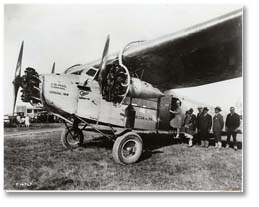 First Pan Am round trip from Key West to Havana
First Pan Am round trip from Key West to Havana
Miami’s place in the history of flight is just as significant as
its role in the creation of the cruise industry. Both operations grew out of the
role of tourism in shaping Miami into a world-class metropolis. Miami first
became a site of air travel in 1920, when the Aero Limited Hydroplane left
downtown Miami for Atlantic City, New Jersey, a sixteen-and-a-half hour flight
that required five stops along the way. Soon several other hydroplane flights
carried passengers to Nassau as well as New York. Both Miami Beach developer
Carl Fisher and aviator Glenn Curtiss had an interest in pursuing airline
service in Miami, as did the famous World War I aviator Eddie Rickenbacker. In
1923, the latter organized Florida Airways, though the effort was short-lived as
it ran into financial trouble.
Soon former Navy Air Service enlistee and Yale
graduate Juan Terry Trippe applied for a government contract to run an airline
mail service between Key West and Havana. On October 28, 1927, the twenty-eight
year old’s new airline, Pan American, launched its mail service operation, and
soon began carrying agricultural products, manufactured goods, and business
travelers and tourists between Key West and Havana. Within a year of opening,
Pan Am moved its headquarters from Key West to Miami, first to 36th Street
Airport (which would expand and be renamed Miami International Airport in 1949),
and then to the naval training airstrip at Dinner Key off the coast of Coconut
Grove. Despite protests from those like Ralph Munroe who believed the airport
would ruin the peaceful character of the bay and damage its fragile environment,
Pan Am made Dinner Key the base for its fleet of “Clipper ships” or seaplanes.
Pan Am’s success, both in airline and seaplane travel, helped establish Miami as
a leading seaport and hub for international travel, truly making the city a
Gateway to the Americas.
|
|



